
Jamie Garvin
Were you up at 1:30 am (Maine time) watching the U.S. Men’s Curling Team grab the gold at the 2018 Olympics as it happened? Jamie Garvin was and, for him, it was well worth losing a little sleep. “It was an amazing match,” he told me. “The epic stone Shuster delivered for the five-point score was unbelievable.”
Jamie is a member of the Pine Tree Curling Club. Every Wednesday night from about nine to midnight — how’s that for dedication and a passion for the game — 40 to 50 members meet at the Troubh Ice Arena in Portland, Maine. They meet that late because it’s the only time the ice is available to them.
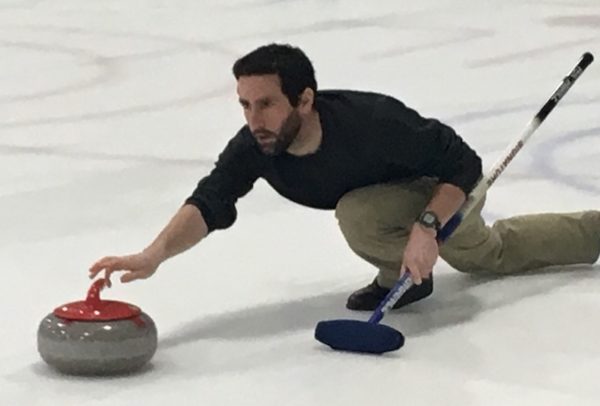
Derek Campbell
Derek Campbell, a physical therapist at Mercy Hospital, organized the club in 2015. Why did he start curling in the first place? Like many people who are drawn to the sport, he saw it on TV and thought, “I can do that.”
It was 2010 and he was at a bar in Boston with his wife and some friends. “The Olympics were on TV,” he said, “and curling was on. It was mesmerizing. I could watch a stone go down a sheet of ice all day. I was automatically hooked.” He and his wife found a curling club, took a class, and joined a league. They’ve been curling ever since.
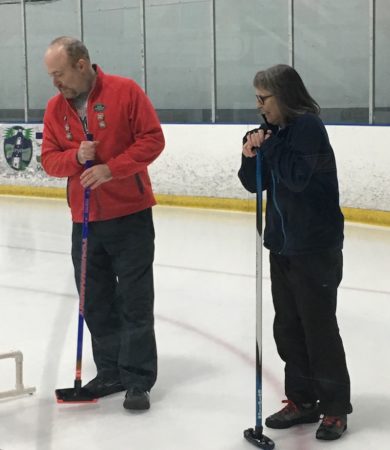
Dave Peterson and Dianne Ballon
It IS mesmerizing to watch a curling match and there is far more to it than you’d think. “It is such a beautiful sport,” said Dianne Ballon. She’s been curling for about seven years, first in the Belfast (Maine) Curling Club and now in the Pine Tree Club. “It’s very athletic even though some people don’t think it looks like it is. The sweeping is very aerobic.”
Melanie Lee, who’s been playing for two years, got started because she’s interested in Scottish activities. (Curling originated in Scotland in the 1500s). “It’s really fun,” she said, “and you meet great people.”
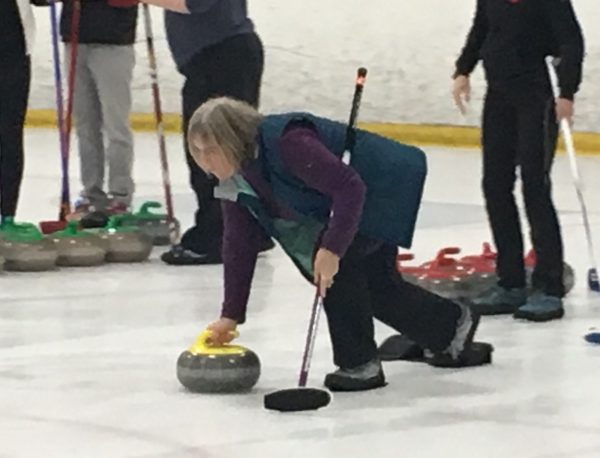
Melanie Lee
The object of curling is to slide a stone (the club uses 42-pound granite stones) down a 150-foot long “sheet” on the ice into a circular target called a “house.” You want to get your stones closer to the house than your opponent.
Before the game begins, the sheets are sprayed with ionized water. The droplets form little ice pebbles that the stones will glide over. When a stone glides down the sheet it doesn’t follow a straight path. Instead, it rotates or “curls” one way or the other. It adds to the challenge.
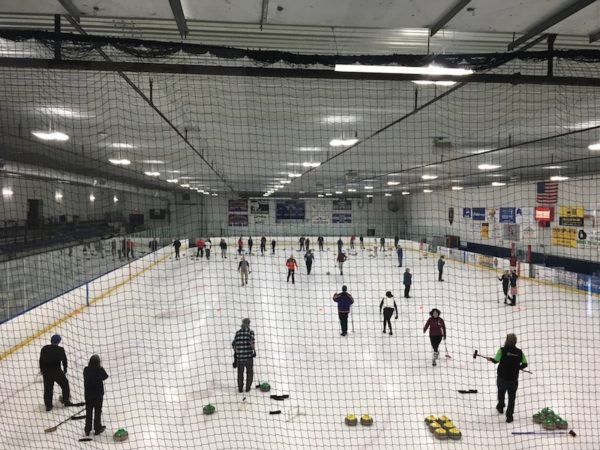
Two teams of four play against each other. Each team delivers 8 stones. The positions are lead, second, third, and skip. The first three take turns delivering and sweeping the stones and the skip stands at the opposite end calling the shots and determining the strategy for the game.
When a stone is delivered, the player stands with his/her heel against a “hack” and pushes out into a lunge position. “The Olympians make it look effortless,” said Tony Otis, who has been curling for three years. “At our level, it’s work and you’ll see all different styles. some people do it with a broom as a crutch and some people use a PVC gizmo for balance. Some people go sideways and some people just stay straight.”
Whatever their style, it’s fun to watch players throw their stone. Once the stone gets past a certain point, the second and third team members walk alongside and, if necessary, start sweeping. “You sweep to make the surface smoother and have the stone go faster, farther, and straighter,” Derek explained. “In order to walk down the ice with the stone and not fall over as you’re sweeping in front of it or hit your own stone or others that are in play takes practice.”
You can learn the basics of curling in an hour or two, but to become really good at it? “In order to really understand the strategy of it and understand how a stone curls, why it curls, and how different speeds or velocities or rotation rates will affect the way that the stone moves and the angles at which they hit each other and where they’re going to go — that takes years,” said Derek.
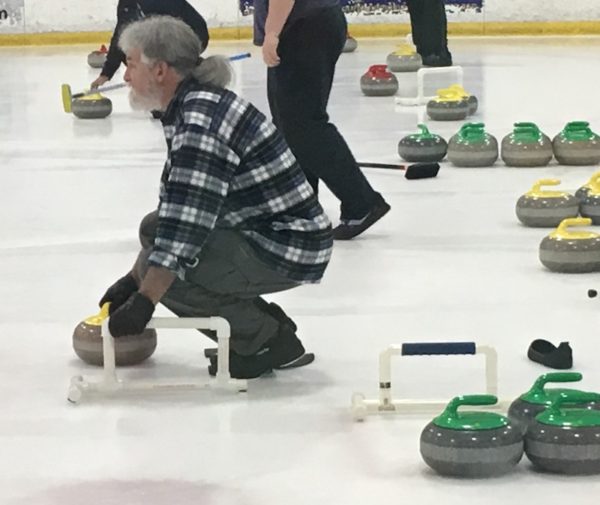
Tony Otis
If you’d like to take a shot at learning the basics and maybe getting so good we’ll see you at the Olympics someday, there just may be a curling club in your area. Here in Portland, Maine, the Pine Tree Curling Club holds regular Learn-to-Curl sessions and welcomes new members to the club. Their dream is to have their own facility (and not have to play only from 9 to midnight.)
“Yeah, it’s a crazy time,” said Tony, “and it’s hard for people who work the next day. But even with this time, we’ve got a full roster, so that says a lot about the sport. It’ll take a while to get our own facility, but we might get lucky. Somebody might win the Megabucks or Powerball. I keep buying the tickets!”
Update January 10, 2019
The club is actively seeking a new facility. Maine Biz reported this week that “The board of directors is just beginning to look, but hopes to find a 17,000-to-20,000-square-foot building, or property to build one, in the greater Portland area.”
If you know of anything, you can contact the club at pinetreecurlingclub@gmail.com. Or send them an email even if you don’t but think you might like to give curling a try.


Leave A Comment